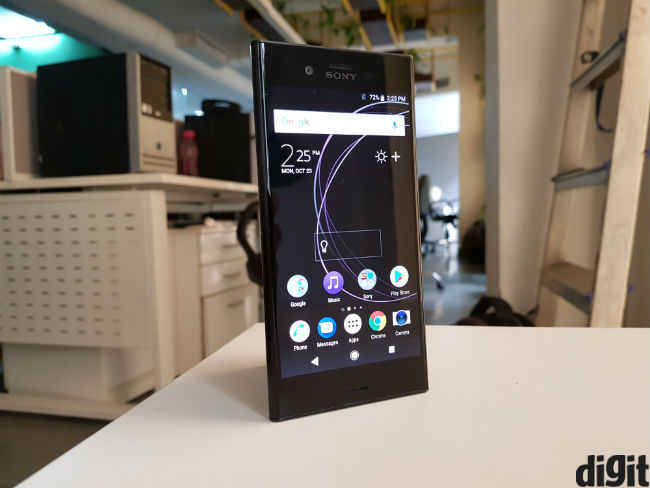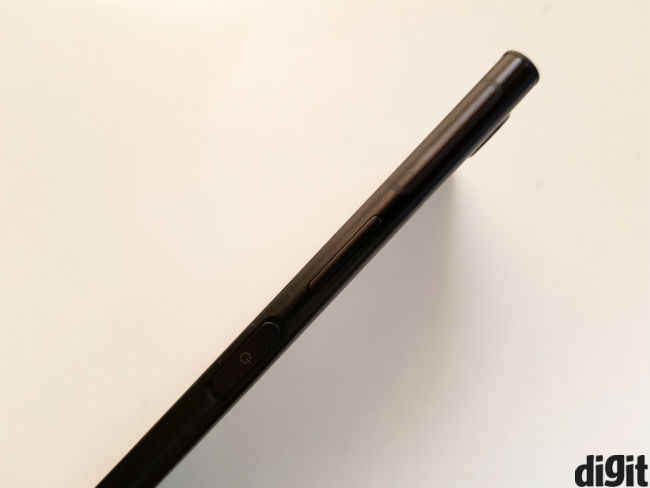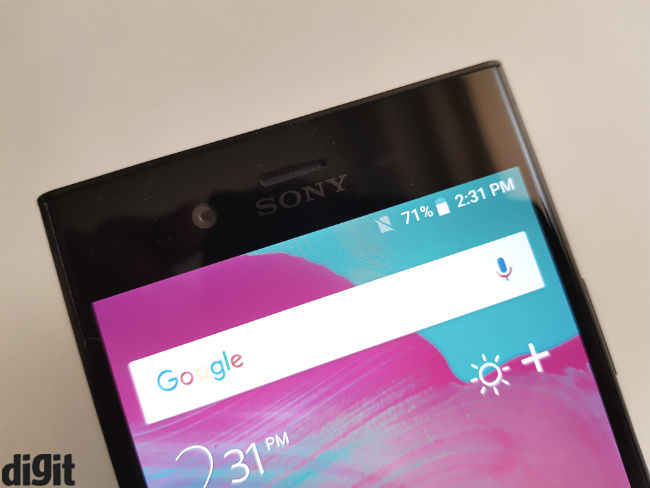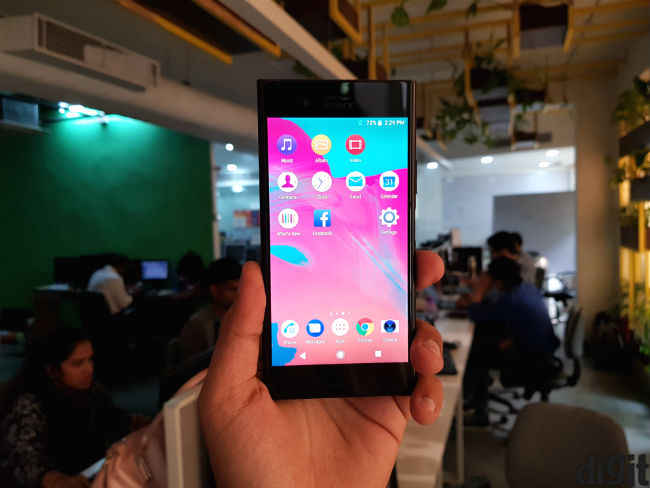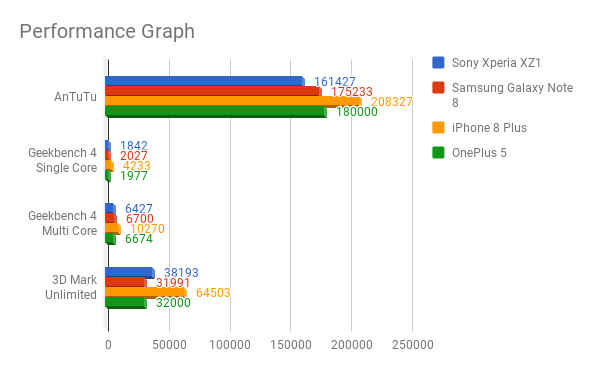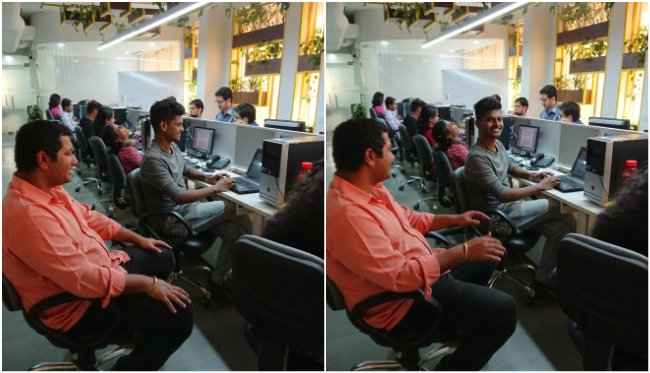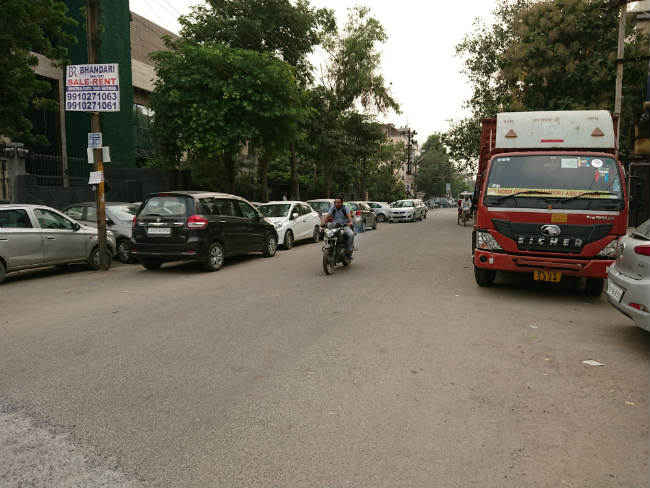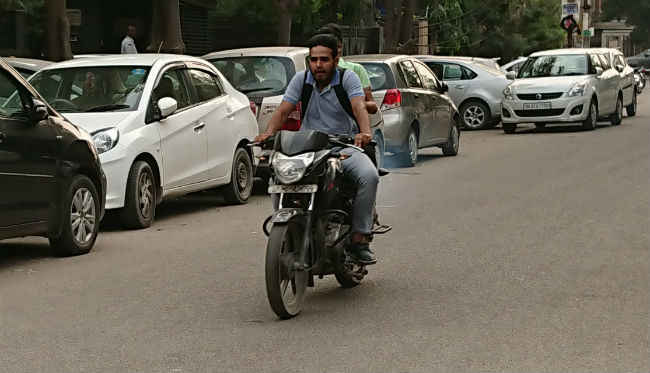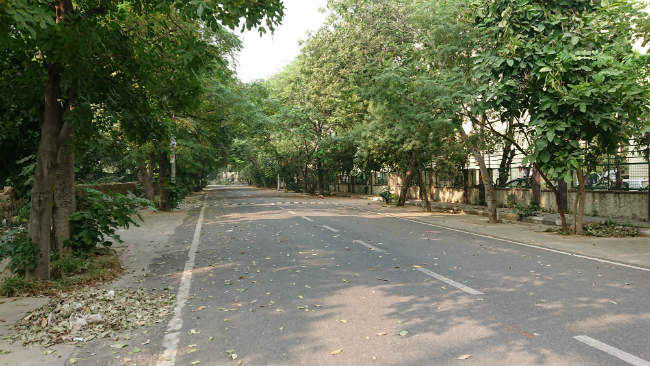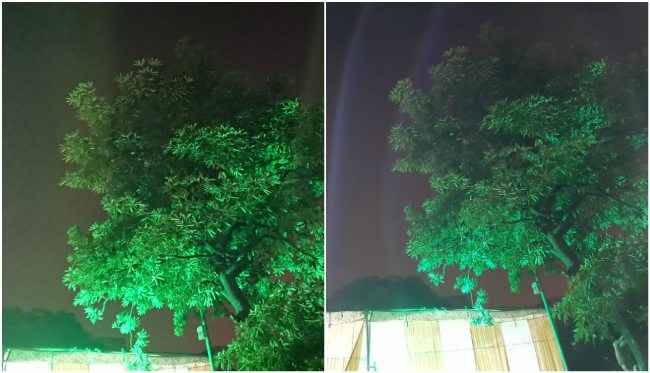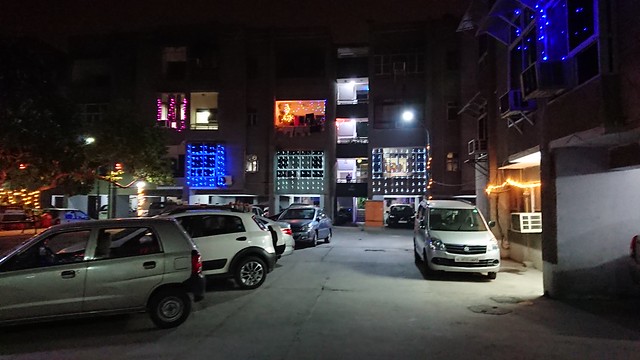Sony Xperia XZ1 Review : Behind the times
The Sony Xperia XZ1 is cheap by Sony’s standards. It also has some impressive technologies built inside, and is a fast smartphone. It just doesn’t feel like a phone that belongs in 2017. It can neither match up to flagship phones of today, nor does it make a good argument against “value” phones like the OnePlus 5. Android Oreo out of the box is really the only reason to buy this phone.
The Sony Xperia XZ1 offers a 3D Scanning feature, that differentiates it from other smartphones. It has Android Oreo out of the box and is the only phone in India to offer that. But, there’s something about this phone that leaves you wanting. Here’s how…
Build and Design: Is old, gold?
Right at the offset, we’ve been seeing this design from Sony for the past few iterations. That seems somewhat of an odd choice from a company that wants to offer a niche segment of the market (Sony fans) a phone they can “upgrade” to. If you had the Xperia XZs last year, it’s near impossible to differentiate this from that phone, at least by looking at it.
In your hands though, it feels a tad different. The Xperia XZ1 has rounded edges, which make the design feel more seamless. It also has the distinct feel of anodised aluminium, meaning it feels more metallic this time. This might be our personal opinion only, but the Xperia XZs felt somewhat plasticky. The entire unit also feels sturdier and more resistant to scratches, although bumps and drops will almost certainly leave a mark.
Though the Xperia XZ1 has a substantially smaller form factor than its contemporaries, that’s not necessarily a bad thing. In fact, compact phone lovers buying flagships will probably want to take a look at this one just for its form factor. The power button/fingerprint reader and volume rocker can be reached without shifting your grip, and your thumb will reach all the way across the screen even if you have average sized hands.
The problem with Sony’s design though is that we’re too used to looking at prettier phones. There are unsightly and thick bezels on the front, which just don’t cut it on a 2017 flagship. Metal is sturdier than glass, but the screen here is still prone to breaking. The fact that Sony just put new hardware inside an old design is tough to ignore. The company moved the flash to a vertical strip next to the camera, on top of the rear panel, which is the easiest way to tell the XZ1 and XZs apart.
This is certainly not a bad design. In fact, the Xperia XZ1 is a minimalistic and pretty design. It just doesn’t scream 2017 flagship in our opinion. With even Apple conforming to market trends, it’s about time Sony went back to the drawing board.
Display: Functional, but not pixel cracking…
The company doesn’t provide unnecessary pixels either. At 5.2 inch, a 1080p display amounts to 424 ppi. That’s quite fine for most users. The display is certainly sharp enough and Corning Gorilla Glass 5 feels premium and smooth to touch. There were no ghost touches or dead spots on the screen.
On the default mode, the display looks less saturated compared to most AMOLED panels. To be clear, that doesn’t mean they’re poor. In fact, Sony presents a balanced display that looks sufficiently vibrant. If you want more true to source colours, you can switch to the sRGB mode from Settings. There’s also a “Vivid” mode, which produces deeply oversaturated colours, the kind many tend to like. These preset modes don’t give you granular control over colours, but it’s still more than what many phones offer.
Software: Android Oreo, almost stock…
The Xperia XZ1’s only real advantage over the competition is that it runs Android Oreo out of the box. In fact, it’s the only phone in India to offer the newest version of Android, till the Pixel phones make it to our borders. The phone presents a lightly skinned version of Google’s software, with all of its new features and changes.
The most noticeable change here is that the Settings/Accounts icons have been moved below Quick Settings now. Of course, you also get the native picture-in-picture feature, Google’s new autofill APIs and more. The Settings menu is slightly different and it has a search button on the top right, which pretty much eliminates any need to get used to the changes.
Barring the fact that you’re getting the newest software out there, there’s no visible benefit here. Of course, simply having the newest software is a great benefit in the Android world. Going by Sony’s history, Android P and Q are almost certainly guaranteed here.
3D Scanning: Gimmicky and niche…
If we were living in a world where 3D printers were ubiquitous, the Xperia XZ1 would have been amongst the coolest gadget to have. The phone offers a 3D Creator app inside, that can be used to create 3D models of faces, objects, food etc. You can save them to the cloud for easy access later and you can print them on any 3D printer. Sounds good? It sure is, except that almost no one in India has a 3D printer at their home, or even in their vicinity. It mostly falls under industrial machinery today, and in that regard, Sony’s software needs a lot of work.
For one, you can’t take 3D scans in low light situations. In fact, the phone often refused to take 3D scans of dark objects in indoor conditions (under tubelights). When you do take low light scans, the result will be distorted and unusable. However, you can have some fun with your friends with this camera. It doesn’t really create realistic scans, but have you seen a plastic doll that looks particularly realistic?
Shooting 3D scans is quite easy. It does take some getting used to, but once you figure out how the camera needs to move, you’ll get it done. The only problem is that Sony is doing all this with software only, so the final result is useful for home usage only. We don’t reckon much industrial application here, and though Sony is putting a lot of stock into this feature, it’s too niche for the consumer at large.
Performance: Excellent…
Sony’s phones go unrecognised because of their design, displays and more, but we’ve rarely questioned these on performance. The Xperia XZ1 runs on the Snapdragon 835 chipset and though we would have preferred more RAM, 4GB never really presented noticeable difference. The Xperia XZ1 is as snappy as snappy gets. In fact, regular app loads and UI navigation feels as snappy as the fastest phone in 2017 so far (in India). You’ll only see split second freezes when launching games like Asphalt 8, Injustice 2 etc, which is common for any and all Android phones.
For gaming or using other heavy apps, the phone does everything right. In fact, the fact that it has a 1080p display helps drive higher frame rates than QHD counterparts. There were no frame drops on the device and we can’t question its performance in any regard. As an example, you may have noticed lags on other phones when a game tells you to download Google Play Games before playing. On the Xperia XZ1, that happens fast and without any slowdown.
That said, the 3D Creator app does require a lot of processing. So, shooting two or more back to back scans with the phone will substantially heat it up. That happens over about half an hour of gaming either, and though it’s slightly uncomfortable, we didn’t record abnormal temperatures on the device.
Audio Quality: Few come close…
With Android Oreo, the Xperia XZ1 supports Sony’s LDAC codec now. Also, the company’s DSEE HX technology is built into this phone, that upscales audio output to bring them closer to Hi-Res levels. That’s especially helpful for those who stream music, since Apple Music and many others use audio formats that lead to some loss. DSEE HX is turned off by default, so you will need to turn it on from Settings. Once on, you will feel a difference in audio quality. It’s a feature that audiophiles will appreciate.
The Xperia XZ1 has front facing stereo speakers that aren’t particularly loud, but produce better audio quality than most other phones. It’s also excellent with headphones. It supports a variety of codecs, including FLAC, and produces high quality audio with mid to high-end headphones.
Camera: Impressive tech, but lacks basics…
As with design, Sony is skipping the dual-camera trend with the XZ1. So you don’t get to click bokeh photos, wide-angle cameras or optical zoom. It has the Xperia XZs’ Motion Eye camera, so you get 960fps slow motion recording. Our thoughts on that remain the same as they were earlier. Like 3D scanning, it’s a nifty feature for a smartphone, but not one that users will find much practical use for.
You get a 19MP Exmor RS sensor with f/2.0 aperture and Sony’s predictive hybrid autofocus and predictive capture technologies. You turn on Predictive Capture from the camera’s settings. With this, the camera automatically ascertains smiles and other emotions and clicks the photo before you actually press the shutter button.
Predictive capture mode takes four photos in all and allows you to choose the ones you want
Predictive Hybrid Autofocus keeps moving objects in focus
The moving bike has been kept in focus here
The feature works automatically, so you will see a small “Predicted” message when this feature comes into effect. It will then show you four photos in the Album, allowing you to save all of them or choose the best one. On paper, it sounds like a killer feature. In practice, we found predictive capture rarely coming into effect. You can see it in action by pointing the camera at a TV (with something playing on it), but we barely ever saw the “predicted” message when shooting in general conditions.
Predictive hybrid autofocus takes effect when clicking moving objects. It sort of tracks an object, ensuring it is in focus most of the times. Like Predictive Capture, this also works automatically, as long as Predictive Capture is turned on.
In practice, it works well on people walking around, but anything faster seems blurry still. It also works for objects moving towards you, over those that are moving past you. So, don’t expect to subdue blur when shooting cars on the roads, but a bicycle rider or your friend walking by, should still be in focus. That said, predictive autofocus works when the camera chooses focus points automatically, the Xperia XZ1 is still noticeably slow when you touch to focus.
Truth be told, predictive capture and predictive autofocus are nifty features for any smartphone camera. Predictive capture is obviously more useful, though Sony’s autofocus tech isn’t bad either. People with babies at home, or those who like taking candid shots, will like these technologies.
Technology-wise, the Xperia XZ1 is a feature rich camera. The big problem is that at its core, the camera still lacks shooting prowess. It can take impressive photos in well lit conditions, with lots of details, but low light photos are sub-par by flagship standards today. Details are lower and the overall scene doesn’t look very bright. But that’s not why this camera is weaker. In fact, most will likely not even notice any difference here.
Daylight shot
100% crop
Daylight shot
100% crop
Low light shot, taken under halogen lights
100% crop
Sony Xperia XZ1 (left) vs Samsung Galaxy Note 8 (right)
Low light, Xperia XZ1 on the left and Samsung Galaxy Note 8 on the right
100% crop
Low light, Xperia XZ1 on the left and Galaxy Note 8 on the right
Features like predictive capture and autofocus are supposed to make the camera more dependable, and they do to some extent. However, the Xperia XZ1 doesn’t do very well in challenging conditions. While most flagships shoot in auto-HDR today, the XZ1 is noticeably low in terms of dynamic range. We saw shadow details being lost at times, while highlights were often blown out.
Camera samples
To sum it all up, the Xperia XZ1 has a good camera for sure, it’s just not up to the flagship standards we are used to nowadays. In a lot of ways, the quality would come down to personal preferences, but we’re not too happy with the lack of dependability here. It’s also slightly slow to process low light photos.
Battery: Disappointing…
The tiny battery inside the Xperia XZ1 works overtime. Sony has done an admirable job in reducing idle battery drops. The phone lasts about 8-10 hours on each change, with average usage. It’s not the perfect battery life from any phone, but we expected even less from a 2700 mAh battery. Sony has done a good job reducing idle battery drops, though resource heavy tasks do use battery significant battery life.
Shooting a 15 minute 1080p video took 8% of the battery’s life. So, the battery life is average at best. That said, the phone supports Quick Charge 3.0, charging to about 40% in half an hour. As a result, most users will get through a full day with a quick charge in the evening.
Bottomline: Good, but not good enough…
In 2017, the Sony Xperia XZ1 is a phone that’s neither here nor there. The company needs to update its design, and though the camera is impressive here, it still needs some work. For Sony fans, the Xperia XZ1 is a fast phone that does everything a phone should. It just pales in comparison to competing smartphones.
How it compares: Outclassed…
The Sony Xperia XZ1 really only has Android Oreo to offer. It has a good camera, but its competitors are significantly more dependable. It doesn’t look or feel like a 2017 flagship, and its battery life is lesser than phones like the Galaxy S8 (review), LG G6 (review), Galaxy Note 8 (review), or even the iPhone 8. We’ve said before, that the flagship range is meant for phones that dazzle, which the Xperia XZ1 does not.
On the other hand, the XZ1 is also a functional device, that does everything a phone should. It’s incredibly smart, has a camera that could potentially impress many, and it has a decent display. The problem is, you can get all this from phone like the OnePlus 5 (review) and Honor 8 Pro (review) at significantly lower prices. So, while Sony’s phone is cheap by Sony standards, it’s just not cheap enough.
Lastly, for Sony fans, the Xperia XZ1 is like buying last year’s phone with new hardware. It’s not an upgrade from an Xperia XZs and lacks the gimmicks of the Xperia XZ Premium. It’s pretty much like an upgrade for the sake of an upgrade, and that never makes for a good device.

